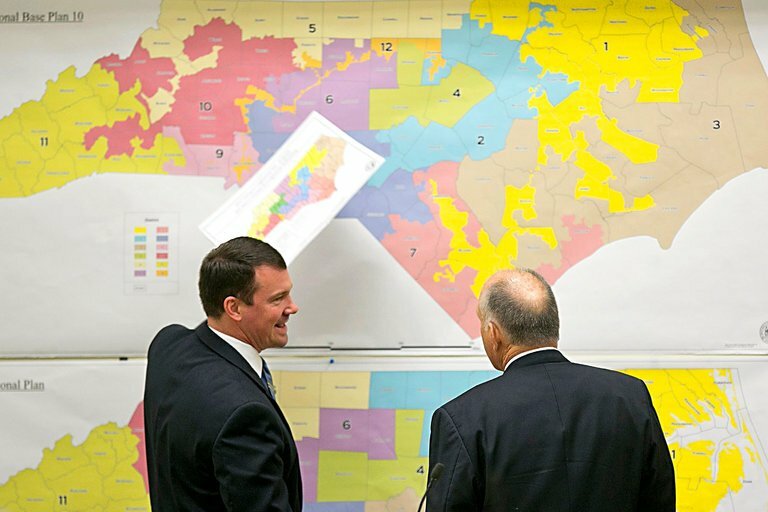Every election season, and perhaps even more so during redistricting, we hear talk that North Carolina is a 50-50 ‘purple’ state. That belief creates a notion in some minds about drawing districts to assure that both of the major parties get half of the seats:
“In North Carolina, 50% of voters vote Democrat and 50% vote Republican. You would believe in a 14-member congressional map, seven would be Democrat and seven would be Republican districts,” said Representative GK Butterfield
There are two problems with that belief.
First, North Carolina is not a 50-50 state.
The last several elections indicate a small but persistent advantage for Republicans statewide in North Carolina. The data site 538, finds that North Carolina has a partisan lean of R+4.8, meaning that Republicans start with a 52.4-47.6 advantage in statewide elections. The 2022 Civitas Partisan Index, which creates a partisan vote baseline based on Council of State races, indicated a more modest 50.8-49.2 advantage for Republicans. The midpoint of those indexes is a 51.6-48.4 Republican advantage.
A 51.6-48.4 advantage may seem small, but its impact on election results should not be underestimated. According to data from the North Carolina State Board of Elections, Republicans have won 39 of 67 statewide elections (58.2%) going back to 2012. I chose that year for comparison because it is the first election after Republicans gained the power to draw state legislative and congressional districts.
(Update: After the Republican sweep of all seven statewide races in 2022, Republicans have won 62.2% (46 of 74) of all statewide races since 2012.)
There is a similar dynamic of a party with a small advantage in public support winning proportionately more legislative seats. That dynamic is expressed by the Cube Rule:
The Cube Rule states that if the ratio of votes between parties in an election is A:B, then the ratio of seats is A³:B³.
Under the Cube Rule, the 51.6% to 48.4% Republican advantage in popular support translates into an expected Republican advantage of 54.8% to 45.2% in legislative seats. That translates into an expectation of a 27-23 Republican majority in the North Carolina Senate, a 66-54 Republican majority in the North Carolina House, and an 8-6 Republican majority in North Carolina’s congressional delegation.
The second problem with the belief that North Carolina’s legislative delegations should be evenly divided between Republicans and Democrats is that North Carolina’s political geography does not allow for it.
Democratic voters tend to be concentrated in larger cities while Republicans are more efficiently spread across the state. The latest research supporting that finding is from two Duke University professors who found that, while Joe Biden impressively won in the largest urban counties in North Carolina, Donald Trump carried all other regions of the state, including the so-called “Countrypolitan” suburban counties that circle those urban counties. In terms of legislative races, that means we would expect Democrats to win most legislative races in urban areas by similarly impressive margins while Republicans win legislative seats in most of the rest of the state. That geographic advantage is in addition to the advantage Republicans have due to their higher average level of support statewide than Democrats have in North Carolina.
That Republican geographic advantage is why the plaintiffs’ own expert witness in the redistricting case before the North Carolina Supreme Court found that there is only a 1.3% chance that a map drawn using politically neutral criteria would result in a 7-7 congressional delegation, with a 9-5 Republican advantage being the most likely outcome.
That geographic advantage was also found by two other Duke University professors, one of whom (Jonathan Mattingly) was also an expert witness for the plaintiffs in the redistricting case. Their analysis found that Republicans have a strong advantage in both the North Carolina House and Senate with maps drawing using neutral redistricting criteria.
The Cube Rule and North Carolina’s political geography combine to explain the bulk of the Republican advantage in the General Assembly and congressional seats in North Carolina.


